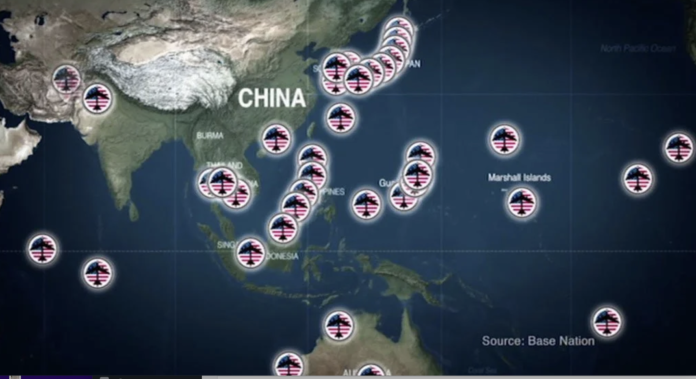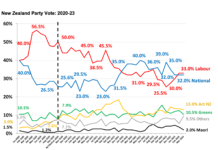Balloons? Bring out the clowns!
Earlier this month, the United States shot down a Chinese spy balloon that crossed the Bering Strait then drifted over Alaska, Canada and the United States’ strategic missile fields in Montana. Since then a number of other unidentified objects have been shot down over Canada and Alaska, sparking an outpouring of extra-terrestrial conspiracy theories and stern punditry.
However, behind the carnival atmosphere; and although the chances of direct conflict between China and the United States remain very low, the incident heightens Sino-American tensions.
Observation balloons are not uncommon, thousands of meteorological research balloons are released around the world every day. During World War Two, Japanese balloons riding the same air currents bombed the American mainland. A balloon is a cheap and useful platform for electromagnetic observation of an enemy’s radar and early warning systems.
This incident provides insights about China, and the key points can be summarised as follows:
- This is an inept operation. Sending a balloon over America is a silly thing to do because the action is provocative, makes China look backwards and low-tech; and probably doesn’t gather a great deal of useful information. The fact that it happened at all demonstrates that the centralised control we expect of the Chinese military may not be as strong as estimated if a ‘loose cannon’ is able to conduct this operation.
- However, even an inept operation demonstrates intent and it is clear that within China’s military there is a belief that any mission (no matter how poorly planned) that threatens the United States or increases Chinese surveillance capabilities is warranted.
- China’s confused and aggressive response denying the balloon is military but failing to provide information about its civilian ownership demonstrates either arrogance; or that within the Chinese bureaucracy there is debate about how to handle the situation.
- The lack of global protest about the incident could indicate the success of Chinese diplomacy and its ability to silence international protest.
It is likely that somewhere in the Chinese military, an officer is currently being punished for executing this silly operation as diplomats try to figure out how to manage the incident. The ramifications will impact for a long time; this week the Unites States, Japan and Taiwan all made public statements demonstrating a hardening of their attitudes to Chinese incursions.
China and Philippines
In recent weeks, a key area of tension in the Pacific is around Scarborough Shoals. A rock outcrop about 150 km west of Subic Bay in the Philippines. The area is claimed by China, in contravention of international law and Chinese and Philippines coast guard and naval vessels are currently engaged in a game of ‘chicken’ as both sides enforce their territorial rights to fish in the area.
This week, the Philippines accused Chinese vessels of using laser pointers to blind their vessels. And; the United States made strong diplomatic noises reinforcing their support for the Philippines. China’s key problem is a recent shift in Manilla’s approach to Sino-American relations. Pivoting more towards America is a change in Filipino foreign policy that during the tenure of President Rodrigo Duterte excluded American forces from the Philippines aiming to demilitarise the South China Sea and to encourage Chinese investment in the country. China’s continued aggression in the area and lack of investment in the Philippines has contributed to a recent change in Filipino foreign policy and the country’s return to the American fold; including offering America the use of four key naval bases. An offer that will see the return of American forces to the Philippines.
Japan’s massive defence spending increases
Japan increased defence spending by about a quarter this year taking its 2023 defence budget to $ 55 billion (USD). This increase is part of the new ‘National Security Strategy’ that aims to double defence spending by 2027.
The change in posture includes development of long-range strike capabilities using Tomahawk cruise missiles. Tomahawk is a ‘weapons platform’ or a basic weapon system that is adaptable for different roles. So different versions of the cruise missile have different capabilities; however long-range strike versions are accurate to within approximately 5 metres and can engage targets in China and North Korea; providing what Japan terms a ‘counter strike capability’.
Anti-ship versions of Tomahawk have the range and accuracy to ‘close’ the East China Sea and the Sea of Japan to enemy warships or amphibious landing craft. Tomahawk can either be guided internally to a pre-programmed target or because it is ‘network enabled’ drones, satellites, ground observers or aircraft can be used to guide the missile in ‘real-time’ to engage fleeting targets.
The change is very significant because after World War Two, Japan was rebuilt based on a new pacifist constitution that outlawed expeditionary military operations. In fact, even deployment of Japanese military medical teams on UN missions and to support the War on Terror created considerable domestic political tension.
It is clear that China’s increase in military spending, aggressive attitude to Taiwan and open competition with the United States in the Pacific is motivating the change and China’s tacit support of North Korea reinforces Japan’s unease.
Japan already has a powerful military; its navy is larger than the United Kingdom’s or France’s and since Chinese vessels started sailing close to Japanese territorial waters in the early 2000s Japan has steadily increased its capability. In the 2010s Japan created an amphibious brigade and commissioned two Izumo-class helicopter carriers able to be easily converted into small aircraft carriers to counter any Chinese move to retake the disputed Senkaku Islands. The recent increase in spending accelerates this trend.
New Zealand media criticises the state of its defence force
New Zealand’s defence force is currently supporting the country’s response to huge storms that raged across the country last week. However, prominent magazine North and South’s latest issue highlights significant issues in New Zealand Defence Force resourcing that according to the article impact on capability.
New Zealand plays a key role in the stability of the South Pacific so deterioration of its military capabilities could have significant impacts on security in the region. New Zealand is not a large military but its history of brave, impartial peace support operations in the Pacific; and most importantly their soldier’s demonstrated ability to work effectively with local communities makes this defence force an important potential partner in any security alliance. Any deterioration of its capabilities should be noted by observers.
Ben Morgan is a bored Gen Xer and TDBs military blogger





I think it’s great that PRC citizens can vote in “our” elections as resident foreigners. NACT government, anyone?
Yup fucking crazy and it has to be stopped asap.
Evil communists,evil muslims,evil Russians….evil Chinese….Uncle Sam will see them…off!
Say what you like about US foreign policy, the US citizen does have the ability to vote, travel freely and generally determine their own fate. Authoritarian regimes in Russia, China, and Iran do not allow this for their citizens and that’s pretty much where the “evil” line is drawn. Anything else is just fluff.
I’ve stood in queues in airports around Europe and Asia with lots of Chinese and Russian nationals, travelling freely. Or was that mass escape? They have elections too…maybe theirs are as contrived and warped as Americas?
electoral college and gerrymandering billd look ’em up.
Can we see Chinese navy ships off California, or Maine? Didn’t think so, I’d call that provocative, just like USN in the South China Sea.
NZ needs to add themselves to the BRIICS+NZ. Its the future.
inded tane it LOOKS like brics MIGHT be coming up with a currency to challenge the petrol dollar if they can get the saudis to play nice, the end of the petrol dollar means the end of america
How come no one every gives NZ any tanks or jets?
coz we’d only sell them on after privatising the military….so we’re not allowed nice things urinal
Comments are closed.